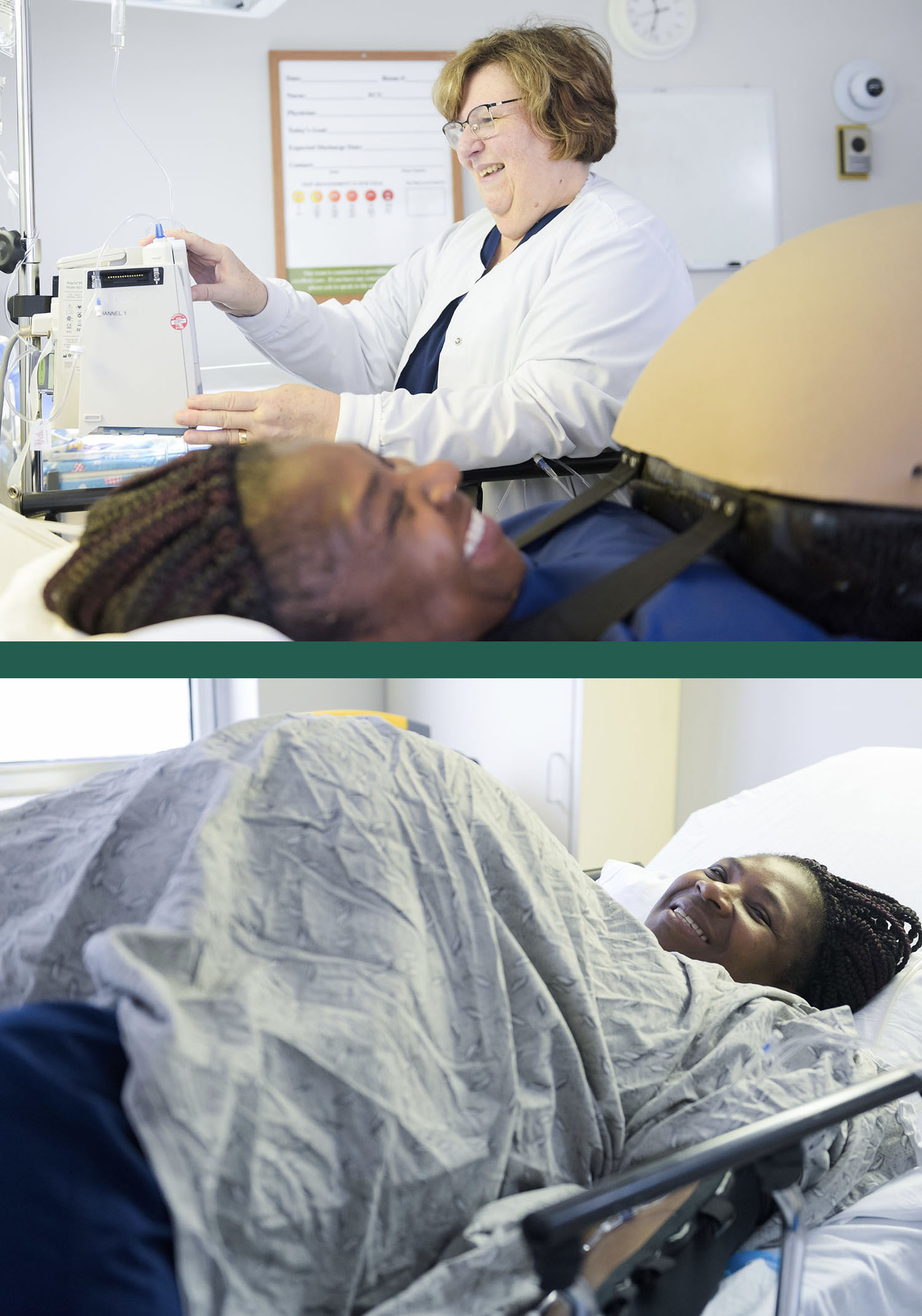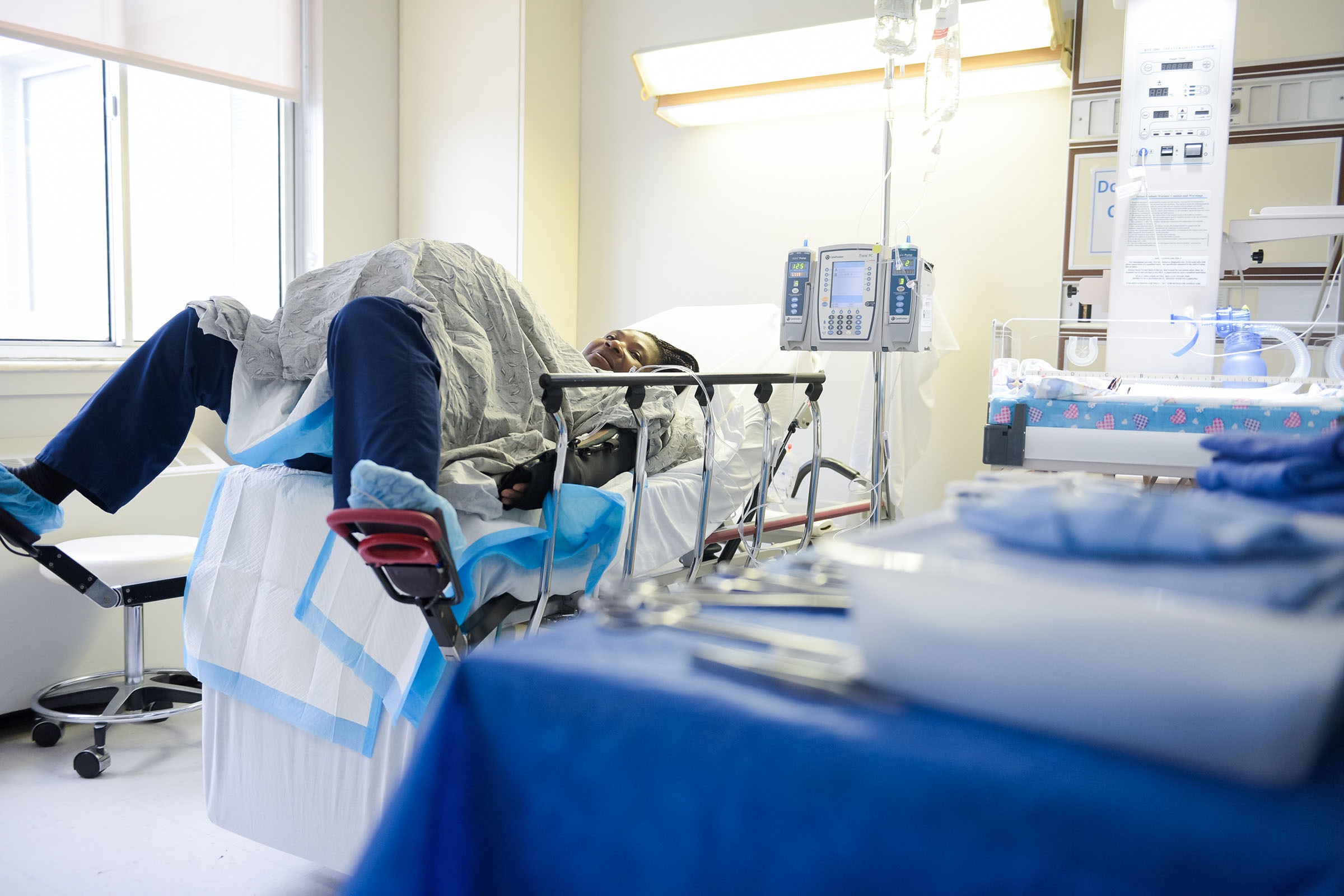Tackling Georgia’s Maternal Mortality Crisis with Unique Midwifery Program
By Caroline Duda, Contributing Writer
F or faculty, staff and students in the Georgia College & State University School of Nursing, combating maternal mortality is the ever-present mission that drives their efforts. More than half of Georgia’s counties have no or limited access to maternal care, but GCSU alumni are actively resolving that deficit.

Georgia College offers both a Master of Science and post-master’s certificate concentrating in nurse-midwifery. Through the first public program of its kind to be accredited in Georgia, GCSU’s midwifery faculty and nurse-midwife graduates hope to turn the tide on Georgia’s history of poor maternal care.
“Georgia has one of the highest maternal mortality rates in the U.S., with significant disparities affecting rural and underserved communities,” said Dr. Monica Ketchie, associate professor of nursing and WHNP and Nurse-Midwifery coordinator.
In 2024, Georgia ranked No. 46 out of 50 states for women’s health, but training more certified nurse-midwives offers one strategy for improving maternal outcomes. In support of that goal, the program will celebrate its sixth graduating cohort this May.
To date, 26 nurse-midwives have graduated from the program. According to Ketchie, nearly all of GCSU’s graduates have remained in Georgia with a “significant percentage” opting to work in rural and underserved communities.
Dameka Wilson-Vickers is one of those alumna nurse-midwives. She earned her Master of Science in Nursing in May 2024 and now works in a rural area of South Georgia near Valdosta.
“The area is growing, but we serve so many of the nearby communities — even people in north Florida,” she said.
Access to prenatal care can be a challenge for expectant mothers in rural areas. In Georgia, rural counties have maternal mortality rates up to 2.5 times higher than their urban counterparts.
“Our nurse-midwifery program at Georgia College was developed with this crisis in mind,” Ketchie said. “We have a strong curricular focus on rural and underserved populations, ensuring students gain hands-on experience in these areas.”
That hands-on experience includes clinical placements in rural and underserved settings, where students learn to provide patient care that is sensitive to the needs of Georgia’s rural and underserved population. The program curriculum directly addresses disparities in healthcare access and teaches strategies for improving maternal outcomes in such settings.
A year after her graduation, Wilson-Vickers has seen the tremendous impact nurse-midwives can have. “The office I work in serves a large low-income community and we are making a difference,” she said.
“Women are seeking early prenatal care and that is amazing. We see very few women who have had no care. It is encouraging,” she added.
Nurse-midwives are experts in more than pregnancy. As women’s healthcare specialists, they provide a continuum of care from adolescence through menopause to include annual physicals, gynecology visits, STI prevention and treatment, prenatal care and of course labor support with the delivery of an infant.
“For aspiring nurse-midwives looking to make a difference, GCSU offers a unique and mission-driven education that prepares students to become change agents in maternal healthcare,” Ketchie said. “Graduates leave prepared to advocate for women’s health.”
Wilson-Vickers echoes this sentiment. “The instructors were always available for support and for questions, and the on-campus labs were a very key point in my comprehension. I loved the program. They treat students like they matter and that goes a long way.”
Header Image: The nursing simulation lab features an array of technology and patient interaction scenarios to provide students with an average of 16,000+ total contact hours annually. Photo by Kristen Simpson.
